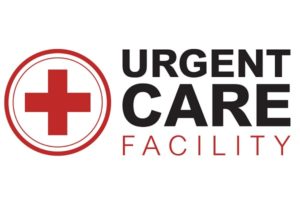 When it comes to seeking medical attention, people without regular doctors may automatically assume they need to go to the emergency room (ER). And while a visit to the hospital emergency department (ED) is absolutely warranted for real medical emergencies, a non-emergency visit could end up costing patients a small fortune.
When it comes to seeking medical attention, people without regular doctors may automatically assume they need to go to the emergency room (ER). And while a visit to the hospital emergency department (ED) is absolutely warranted for real medical emergencies, a non-emergency visit could end up costing patients a small fortune.
This is why it’s important for people to know the differences between emergency rooms and urgent care clinics. Choosing an urgent care clinic for a non-emergency medical situation can help people get the care they need without the high medical bill. So, let’s explore a few key differences in services and costs between emergency rooms and urgent care clinics.
Emergency Room
Emergency rooms are for just that: emergencies. If someone is experiencing a true medical emergency, like signs of a heart attack or stroke, difficulty breathing, major life-threatening injuries, or another medical emergency, then they should visit an emergency room. The ER will have the equipment and staff to handle life-threatening emergencies.
However, if someone isn’t experiencing a true medical emergency, visiting the ER could do more harm than good. Emergency room visits typically come at a high cost and can sometimes take longer to see a doctor.
Not only is the overall cost of care at emergency rooms very expensive, but patients tend to pay more out-of-pocket costs than at other medical care centers too.
Additionally, if a person visits the emergency room several times, they may have a higher bill and increased insurance premium rates. And with the National Hospital Ambulatory Medical Care Survey estimating that one-third to one-half of visits to the ER are for non-urgent medical care, people who don’t need immediate medical attention could save a lot of money by choosing an urgent care clinic instead.
Urgent Care Clinic
Urgent care clinics offer a wide variety of medical services for non-life-threatening situations. From sprained wrists to upper respiratory infections and wounds, urgent care clinics are equipped to handle almost any medical need.
Because urgent care clinics offer pretty much all of the services that primary care providers (PCP) offer, they make a great option for people who don’t have a regular physician or those who require medical attention outside of normal business hours.
Most urgent care clinics are open seven days a week and for a few hours after normal business hours in the evening. And better yet, their services are almost always less expensive than emergency room expenses.
Did you know that visiting a hospital emergency room costs more than $1,000 per visit on average for diagnosis and treatment? Seeing a doctor at an urgent care clinic or primary care provider is likely to cost a fraction of the ER. Should you go to the ER for the flu, or a light sprain, you could face an unnecessary, hefty bill. Dropping into an urgent care center could save you over 50%.
Because most of the procedures provided at urgent care clinics are covered by insurance, out-of-pocket costs for patients are extremely low. When it comes down to it, patients almost always save money by seeking care at a local urgent care facility. That goes for uninsured patients as well.
When to visit Urgent Care versus the ER (common conditions)
| Urgent Care | Emergency Room |
|---|---|
|
|
Final Thoughts on Emergency Rooms vs. Urgent Care Clinics
Ultimately, when it comes to choosing a medical care center for a non-life-threatening condition, remember that hospital emergency departments are not your only option. In many cases, it’s not your best option either. Keep your body and your wallet in good shape — check out urgent care.

